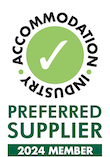Alcohol, Bleach, and Hydrogen Peroxide: Important Facts About These 3 Most Common Disinfectants
In light of the current COVID-19 pandemic, learning how to properly clean and disinfect is essential. Proper hygiene is the first line of defence against the coronavirus.
And although the virus is a nasty bug, it is no match for a good disinfecting product.
“There are many bad things about the coronavirus, but there’s one good thing: It’s not very hardy, most disinfectants easily destroy it.”
Dr, John Sweartzberb professor at The University of California, Berkeley.
How to Properly Clean to Kill Germs and Bacteria
The CDC recommends regular cleaning and disinfecting to help curb the spread of COVID-19. This is especially important for high-touch surfaces such as:
- Door handles
- Light switches
- Tables, and countertops
- Handwashing sinks
- Remote controls
- Phones and keyboards
Best practice dictates that you disinfect these surfaces daily. But before you can disinfect a surface, you must first clean it.
Cleaning removes dirt, germs, and other contaminants. Use soap and water to effectively clean all objects or surfaces.
Note that cleaning does not kill germs. It merely lowers their numbers, reducing the risk of spreading infections.
Disinfecting refers to the process of using chemicals to inactivate or kill germs. But the process does not clean dirty surfaces. Precisely why experts at the CDC recommend cleaning before disinfecting.
The following shows frequent-contact objects and surfaces and how often you should clean and disinfect them:
|
|
|
|
|
|---|---|---|---|
| Toilet bowls, seats, handles, floors | ✓ | ✓ | Daily or immediately when soiled |
| Tabletops, countertops, floors, doors, and cabinet handles | ✓ | ✓ | Daily and when soiled |
| Food preparation and service surfaces | ✓ | ✓ |
Before and after food activity In between prep of raw and cooked food |
| Utensils, toys, and surfaces that have been in contact with saliva or other bodily fluids | ✓ | ✓ | After each use, or use disposable products |
| Handwashing sinks, taps, surrounding counters, soap dispensers | ✓ | ✓ | Daily and when soiled |
| Phones, remote controls, keyboards, and other electronic devices | ✓ | ✓ |
Daily and when soiled, Use disinfecting wipes to prevent damage |
How to Disinfect Using Common Household Disinfectants
Before disinfecting, read and understand all the instructions on safe and appropriate use. Pay close attention to the directions and hazard warnings on the product labels. Some disinfectants are hash and might cause injury, or damage your fabrics and linens.
Disinfectants like bleach may call for the use of gloves to protect your hands. Ensure you have the necessary personal protective equipment (PPE) where appropriate.
Note: Do NOT mix different disinfectants unless explicitly indicated it’s okay to do so on the label. Chemical reactions from mixing products, like bleach and ammonia cleaners, can cause severe harm.
The three most common household disinfectants are:
- Alcohol
- Bleach
- Hydrogen Peroxide
Here’s a comprehensive guide on how safely and effectively use each one of them to disinfect for COVID-19
Alcohol Disinfectants
What is Alcohol?
Alcohol is a water-soluble chemical compound with germicidal characteristics. The two major kinds of alcohol used in disinfectants are:
- Ethyl alcohol
- Isopropyl alcohol
You can use these in a wide variety of concentrations and purity grades for disinfection. However, they can also be dangerous if used incorrectly.
 Image: courtesy
Image: courtesy
How Does Alcohol Kill Germs?
When mixed with purified water, alcohol forms a fast-acting antimicrobial. At concentrations of between 60-80 per cent, alcohol is a potent virucidal agent.
The water acts as a catalyst in the denaturing of the proteins within microbial cell membranes. One of the qualities that make alcohol an ideal disinfectant against COVID-19.
You can also mix alcohol with aloe vera to make a hand sanitizer. Just be sure to maintain a concentration of about 70% for optimal efficacy. Once concentration drops lower than 50%, its antimicrobial qualities drop significantly.
However, higher concentrations of alcohol don’t necessarily equate to increased virucidal properties. Pure alcohol, for instance, evaporates too quickly to be effective.
When disinfecting with an alcohol solution of 70%, allow for a contact time of about 30 seconds. This applies to both surfaces and objects such as cell phones.
Alcohol is also a great option for cleaning, disinfecting, and removing stains on linens and other fabrics.
Precautions When Using Alcohol Disinfectants
As mentioned above, alcohol can be very dangerous when used incorrectly. Here are a few things you should not do with alcohol:
- Never mix alcohol with bleach. Alcohol reacts with bleach to create chloroform – a highly toxic compound.
- Don’t use alcohol near or smoking flames. Alcohol is HIGHLY flammable.
- Don’t use alcohol in enclosed or poorly ventilated areas. It is highly volatile and creates potentially harmful fumes.
- Don’t use alcohol to disinfect:
- Finished surfaces – ethanol is a powerful solvent. Keep it off painted, lacquered, shellacked, and varnished surfaces, including treated wood.
- Delicate and synthetic fabrics made from acetate, rayon, silk, and wool.
- Don’t drink it! According to the National Capital Poison Center, isopropyl alcohol is highly toxic even in small amounts.
- Keep disinfecting alcohol away from children. And don’t store it in containers where it might be mistaken for water.
Bleach Disinfectants
 Image: courtesy
Image: courtesy
What is Bleach?
Chlorine disinfectant or household bleach is probably the most widely available disinfectant. It comes in liquid form – sodium hypochlorite and in solid form – calcium hypochlorite.
Typically, in solution form, it's available in concentrations of between 5.25 - 6.15% sodium hypochlorite.
Bleach has several qualities that make it an ideal disinfectant, namely:
- It has a wide range of antimicrobial activity
- It does not leave toxic residue
- It is not affected by hard water
- It is inexpensive and fast-acting
How Does Bleach Kill Germs?
Microbial inactivation of microorganisms by chlorine is due to several factors. These include:
- Decreased uptake of nutrients
- Ring chlorination of amino acids
- Inhibition of protein synthesis
- Loss of intercellular content
- Oxidation of respiratory components
- Breaks in DNA and depressed DNA synthesis
When using bleach as a disinfectant, you can dilute it with cold water depending on how strong you would like it.
Here’s a bleach dilution chart to help you out:
 Image: courtesy
Image: courtesy
Use the diluted bleach within 24 hours as its potency fades over time.
Ensure a contact time of at least 30 seconds for non-porous items. And at least ten minutes for household surfaces that won’t get damaged.
Precautions When Using Bleach Disinfectants
Keep in mind that bleach is very harsh on the skin. Don’t use bleach as a substitute for hand washing or a hand sanitizer. Here are a few more precautions you should keep in mind when using bleach as a disinfectant:
- It can cause ocular irritation
- It can cause oropharyngeal, oesophagal, and gastric burns
- It is corrosive to metals in high concentrations
- It causes discolouration of fabrics
- It releases toxic chlorine gas when mixed with ammonia or acid
- Its disinfecting power reduces with increase in pH
Hydrogen Peroxide Disinfectants
 Image: courtesy
Image: courtesy
What is Hydrogen Peroxide?
Technically speaking, hydrogen peroxide is water, with an additional oxygen molecule. It has good germicidal activity and is effective against a wide range of microorganisms including:
- Bacteria
- Fungi
- Yeasts
- Spores
- Viruses
Even the FDA lists hydrogen peroxide as a cleared liquid chemical sterilant and a high-level disinfectant.
 Image: courtesy
Image: courtesy
Upon use, hydrogen peroxide breaks down into oxygen and water. It's also kinder to the skin and the environment making it a safer alternative to bleach.
When used in laundry, it removes stains, disinfects, and whitens fabrics. Making it ideal especially if you use white linens in your home or establishment,
How Does Hydrogen Peroxide Kill Germs?
Hydrogen peroxide kills germs by producing hydroxyl free radicals. These damages the lipid membranes, DNA, and other vital cell components.
Typically, Hydrogen peroxide comes premixed and ready to use at a concentration of 3-5%.
Apply it using a spray bottle or a clean cloth, and allow for a contact time of at least five minutes for proper disinfection.
Hydrogen peroxide has no odour and will decompose into oxygen and water. Thus it does not require cleaning up, making it ideal for disinfecting hard to reach areas.
Note: Hydrogen peroxide is light-sensitive and will lose potency if incorrectly stored. Keep it in the dark, away from sunlight.
Precautions When Using Hydrogen Peroxide
As with all disinfecting chemicals, there are some hazards that come with using hydrogen peroxide. These are:
- It is not compatible with metals like zinc, brass, copper, silver, nickel
- It can cause serious eye damage upon contact
- It can cause skin irritation in high concentrations
Make use of the appropriate PPE to shield yourself from these hazards. You should also follow the product instructions on the label.
Keep Your Family Safe With Proper Disinfecting Protocols
Maintaining good hygiene plays a major role in the fight against COVID-19. The coronavirus can survive on various surfaces for anywhere from a few hours to a few days. This necessitates the need for a deep cleaning and proper disinfecting with the right products.
And this is not restricted only to the high touch surfaces. It extends to all areas of your home or business including the fabrics, linens, and other textiles.
Remember, proper cleaning and disinfecting is the first step towards protecting yourself, your family, and your guest from COVID-19.
Source: Airman 1st Class Abbey Rieves















